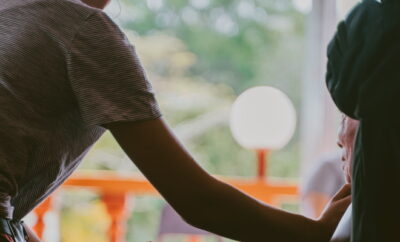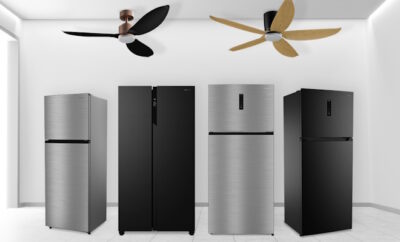
Health x Wellness
Security solutions to enhance care provision in the Singapore home
In Singapore, reports shows that about one-third of older persons aged 60 and above has fallen more than once. Falls happen frequently in the home environment. Causes range from environment-based hazards including clutter and slippery floors as well as due to the active ager having visual or medical problems.
Falls can result in fatal or medical issues including hip fractures that require long-term care.
These falls could have been prevented.
The Active Age speaks with Mr. Salim Mohammad, Regional General Manager, Tyco Integrated Fire & Security, Installation & Services about how security solutions are increasingly being looked at to help with caregiving and to enhance care for Singapore’s ageing population.
Tyco has a service called Care Alert, that combines several technologies into a system that can help monitor the elderly, especially for those who might be at home alone for most of the day.
The Active Age (TAA): What is Tyco seeking to do, in terms of preparing the household to take care of both elderly family members and even younger children?
Mr. Salim Mohammad (SM): The home is an important place in everyone’s hearts because it’s the place that they return to at the end of each day to unwind and rest. Tyco wants to give the peace of mind to people that their home will be secure and safe – this is why we offer a suite of holistic security solutions that will suit any household.
For everyday security, there are 24/7 monitoring and emergency response, video surveillance and access control systems. For households with special needs, there is also the ADT Care Alert. This pro-actively alerts external help in the event of an emergency, and paired with the 24/7 monitoring and response service, can add an additional layer of security for those unforeseen events that may happen to young children, the elderly or individuals who may need special care.
TAA: Can you share more about Care Alert, the steps involved and importantly, how it benefits the caregiver in a multi-generation family unit?
SM: We wanted to create something that is easy to use and understand for both the caregivers and the people using the system at home. So Care Alert comes with a water-proof wearable pendant and a separate panic button, and a sensor unit. If an emergency situation happens, all the user needs to do is press a button on the pendant or the panic button, and this kicks off a sequence of events – the alert goes straight to a family member, or to the 24/7 call centre. The course of action taken is decided upon when Care Alert is first installed, so it’s up to the family to determine how the sequence of events plays out.

Panic button

Waterproof Pendant Transmitter
Care Alert can also provide another layer of security by being able to detect and send a ‘no movement’ alert to the 24/7 monitoring centre after a certain period of time. This is triggered if the person at home loses consciousness and is unable to move. Once the alert is registered, the monitoring centre will then trigger a series of actions according to what was agreed on with the customer. For example, the action could be to get in touch with the user at home, or contacting a family member to decide what should be done next.
The most important aspect of Care Alert and the external help that it offers is its 24/7 availability, with or without the press of a button, where response time is shortened considerably. This is useful especially if the user is unsupervised for most of the day.
Care Alert is great for giving family members peace of mind – given all the different scenarios that might occur – knowing that their family has 24/7 help available, and can easily get outside assistance should they need it.
TAA: What would you describe as an ideal set-up using Tyco products for the home environment?
SM: Each home is different, so there really is no ‘ideal’ set-up – the good thing is that Tyco solutions can be personalised to individual needs based on their property and the level of monitoring that you require. Generally speaking, you’d need to look at a three-prong approach to safeguard a home:
- 24/7 security monitoring to guard against unauthorised intrusion
- CCTV to monitor and review what actually happened
- ADT Care Alert as an extra layer of security to quickly resolve emergency situations when there are special needs
TAA: In your opinion, what has changed in the technology field from 18 – 24 months ago, making it easier for households to adopt technology?
SM: In recent years, affordable broadband and VOIP (Voice over Internet Protocol) ensures that households can stay connected. Tyco uses these to enable households to connect to monitoring stations through the security systems installed. Cloud-based technology and data collection is also an important development that has boosted the capability of smart devices to enhance and enable home security solutions.
TAA: Are such technology solutions expensive to install or maintain?
SM: Care Alert works on an affordable monthly fee, and comes with a one year product warranty. The system itself requires very minimal maintenance – all a user needs to keep an eye on are the access line, the battery life of the sensors, and that there is adequate signal coverage. If you want to take the guesswork out of when your system needs maintenance, you can opt for the hassle-free maintenance services for a nominal fee.
TAA: Do you think that technology can replace a human caregiver, helper or nurse?
SM: At the end of the day, nothing beats a human touch. A caregiver provides care to a person on many different levels, and while technology can help enhance and speed up any help and care; a human caregiver provides emotional and personal care that can’t be replaced, at least not with technology.
For instance, Care Alert serves as a means to obtain external help quickly in the event of an emergency but it cannot comfort or perform first aid on the user if required.
TAA: Do you have any tips that a caregiver can use to look after elderly folks at home?
SM: I would suggest the following tips for caregivers.
- Encouraging independence – technology can be difficult for older folks to grasp sometimes, even though we know that its benefits can be multi-fold. The products that the end-users need to interact with for Care Alert have been deliberately kept easy-to-use and to understand. This gives them the freedom to keep doing what they do, without having to worry about complicated processes to follow in case of an emergency.
- Asking their advice – keep everyone in the loop when it comes to making a decision about added security. This helps them to be more accepting of what the system will do and how it can help them. They can also help to establish the course of action that needs to be taken in the different scenarios.
- Establishing a routine – a routine helps everyone know to what to expect, and also helps to remind users to carry their panic button/pendants, so that it can be of use to them.









